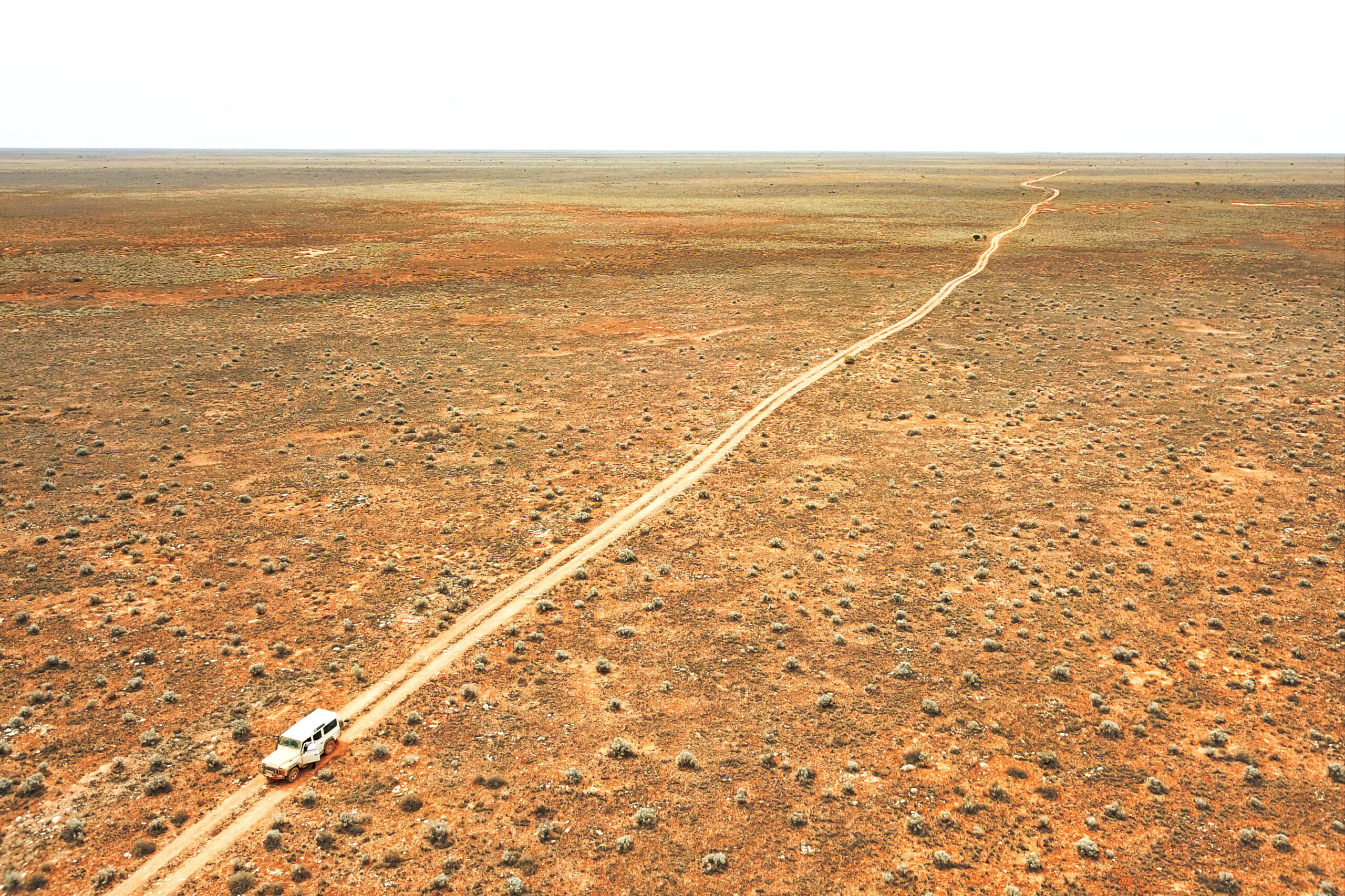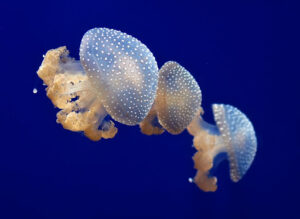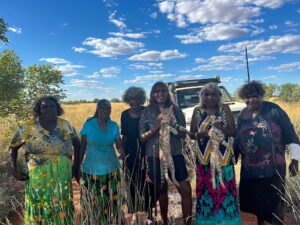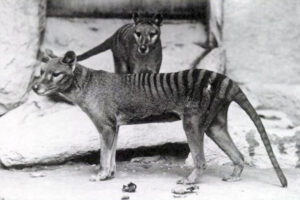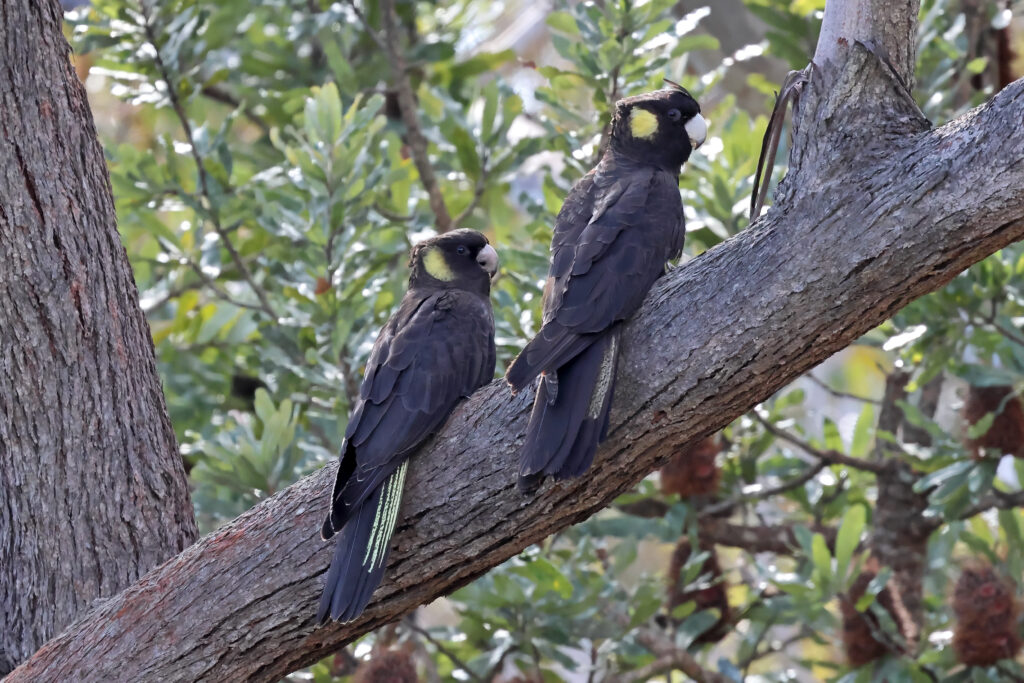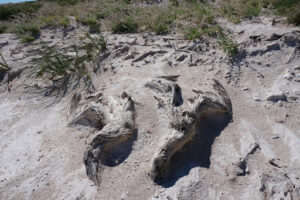The Nullarbor wasn’t always a dry, dusty plain. It may be hard to imagine, but it was once covered in lush forests teeming with diverse plants and animals.
Until now, geologists didn’t know when the landscape changed. But new research from Curtin University has revealed the area dried up between 2.4 and 2.7 million years ago.
The finding provides insight into how our modern ecosystems evolved.
“It’s a key element to understanding the biogeography in Australia,” says Dr Maximilian Dröllner, the study’s lead author and PhD candidate at Curtin University’s Timescales of Mineral Systems Group.
HIGH AND DRY
Millions of years ago, the Nullarbor sat on the ocean floor. It gradually emerged as sea levels declined.
While groundwater levels were still relatively high, dense forests flourished in a humid climate.
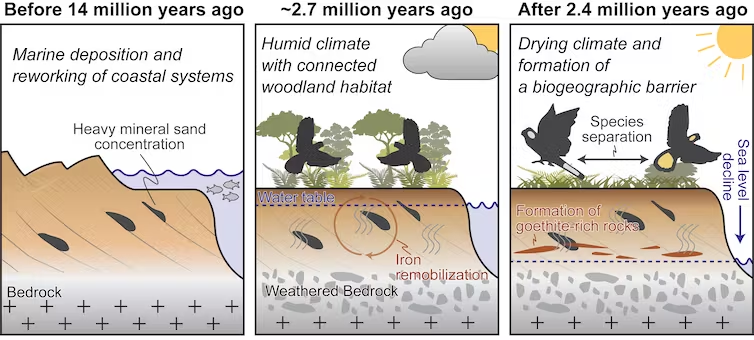
Nullarbor changes over time, causing species separation and goethite-rich rock formation | Dr Maximilian Dröllner
“Fossils tell us there were animals and plants which are extinct today,” says Max.
Two of the world’s largest cuckoo birds and a tree-kangaroo are just some examples of the now-extinct animals that once called the Nullarbor home.
When the water table dramatically dropped, the drylands that we see today formed.
ROCKING EVIDENCE
Max and his team analysed iron oxides in rocks buried 20–30 metres beneath the plain’s surface.
The iron-rich rocks hold minerals that are markers of past groundwater levels. This makes them excellent archives of historical changes in climate.
“We used something that is the direct product of the drying on the continent,” says Max.
“We basically found a local proxy telling us the climatic story of the Nullarbor Plain.”
How did they measure what was in the rocks? They fired lasers at them.
IRONING THINGS OUT
Traditional climate dating models predominantly rely on marine sediments.
“Because they are often continuous layers, you can date them quite well,” says Max.
While this method shows broad, global changes, it isn’t specific enough to pinpoint local environmental changes.
“If you really want to figure out how things locally changed, you need to have a local product,” says Max.

GIPHY
The mineral goethite – the main component of rust – forms in rocks when iron-rich water comes into contact with oxygen.
Firing a laser beam onto these mineral grains releases helium gas, which can be quantified.
“In a very simplified sense, the amount of helium in the mineral is a sort of clock,” says Max.
“We can calculate the age when the mineral formed and link this back to a climate response.”
SPECIES SPLIT-UP
When the Nullarbor dried out, a vast biogeographical barrier was formed. It forced species to migrate to more favourable habitats to the east and the west.
According to Max, this is probably why many species with common ancestors evolved separately on opposite sides of the country.
“My favourite example is black cockatoos,” he says.
“In south-eastern Australia, you find yellow-tailed cockatoos with yellow cheeks, and in south-western Australia, there’s the Carnaby’s cockatoo with white cheeks.”
Another such example is the evolution of bobtail lizards.
Defining this evolutionary timeline helps biologists understand how past climate events impacted biodiversity.
FUTURE CLIMATE CLUES
As well as looking back at how past drying events impacted ecosystems, this knowledge can be helpful for the future.
“It can inform our strategies around how species can adapt to that change,” says Max.
Drying events like the Nullarbor are important to study as droughts become increasingly common.
Drylands – which include arid, semi-arid and dry sub-humid areas – cover almost half the Earth’s surface.
Australia is the world’s driest inhabited continent – 70% of the land is classified as arid or semi-arid.
“Around 3 billion people are living in drylands at the moment, but this number will increase,” says Max.
Over the last few decades, the intensity and range of some of these drylands have increased.
Understanding past drying events will help us to prepare for a warmer, drier future.
“It contributes to developing better preservation efforts for ecosystems facing these kinds of climate challenges,” says Max.



